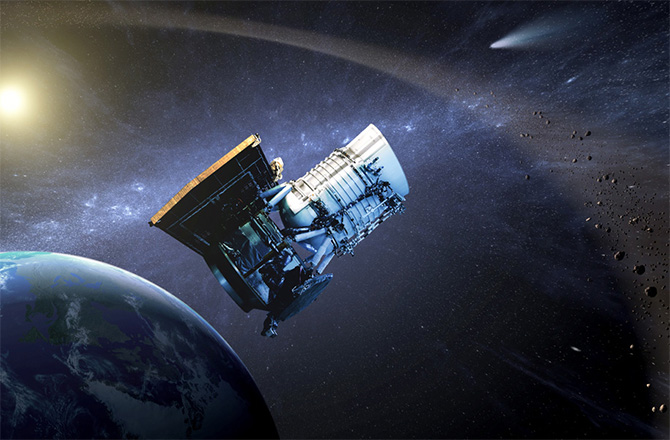Finding 'Spooky': Why Hunting Asteroids Is Hard

Newspapers, news channels, radio programs and social media were on fire last month with reports of an asteroid that was discovered and going to pass close to Earth only twenty-one days later!
PHOTOS: This is Why Some Asteroids Act Like Comets
The asteroid, or as it turns out the extinct cometary nucleus, became known as "Spooky" -- officially 2015 TB145 -- when it transpired that its closest approach was on Halloween. What grabbed the attention of journalists was the lack of notice we received before the visitor rattled passed us at nearly 80,000 miles per hour (36,000 meters per second). The question on everyone's lips seems to be: why did we not find it earlier?
The simple and quick answer is that asteroids, and comets to a lesser degree, are pretty difficult to spot. Apart from the fact they are generally small, they are also usually quite dark too. In the case of our friend "Spooky," it is believed to be no larger than 600 meters across with an albedo (reflectivity) of 0.06. To put that into context, the albedo of a classroom blackboard is roughly the same. Now imagine a 600 meter-wide blackboard flying through space at 36,000 meters per second; by anyone's standard, that's going to be pretty tricky to detect.
Thankfully, there are organizations and armies of amateur astronomers around the world on the lookout for these unexpected visitors.
NEWS: Spooky Comet Gets Some Radar Love
There are at least seven observatory systems that are fully automated, scouring our skies every night on the lookout for rogue objects. LINEAR (Lincoln Near-Earth Asteroid Research program)and the Catalina Sky Survey are the most well known, chalking up thousands of near-Earth object discoveries and a whole host of comets. The rebooted NASA space telescope NEOWISE is also on the lookout in space, spotting these hard-to-see objects in infrared light.
Get the Space.com Newsletter
Breaking space news, the latest updates on rocket launches, skywatching events and more!
The method that all of the automated systems, and indeed amateur astronomers, utilize to detect these dark near-Earth objects (or NEOs) is to analyse star fields for objects that should not be there. Then, once an object is discovered, it's a case of taking more observations as that object moves through the sky to calculate its orbit.
To understand this, imagine taking a photograph of a tennis ball as it flies through the air. A sharp picture will reveal its position accurately but will give you no clue as to its speed or direction. To do this, we need more pictures over a period of time. It is the same with a speeding asteroid; first you need to discover it and then observe it to work out its orbit. Once its orbital characteristics are known, its orbital path can be forecast, and astronomers can begin to calculate that object's level of risk.
PHOTOS: Top 10 Ways to Stop an Asteroid
Often the media gets wind of an asteroid discovery before its orbit is understood, or sometimes, as was the case with "Spooky," we simply don't get much notice -- regardless, 2015 TB145 flew safely past Earth at a distance of around 300,000 miles, just beyond the orbit of the moon.
There are now 13,280 known NEOs just like "Spooky," which are defined as objects that have entered Earth's orbital neighborhood and therefore put the Earth at risk of a collision some time in the future. But it is the NEOs that we don't know about that pose the real threat. As far as they are concerned, all we can do is keep our eyes peeled and hope that the biggest NEOs have already been discovered.
This article was provided by Discovery News.
Join our Space Forums to keep talking space on the latest missions, night sky and more! And if you have a news tip, correction or comment, let us know at: community@space.com.









